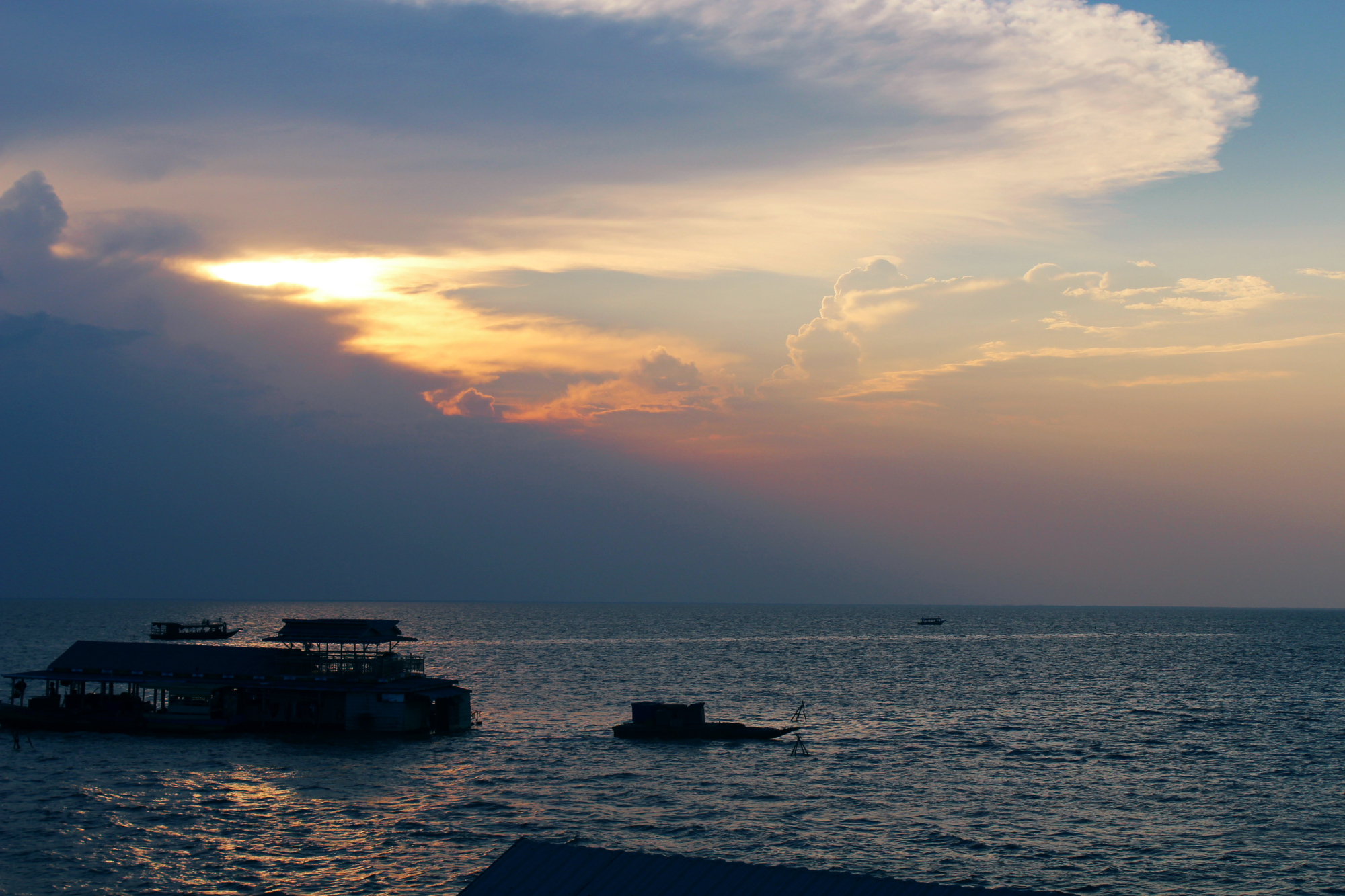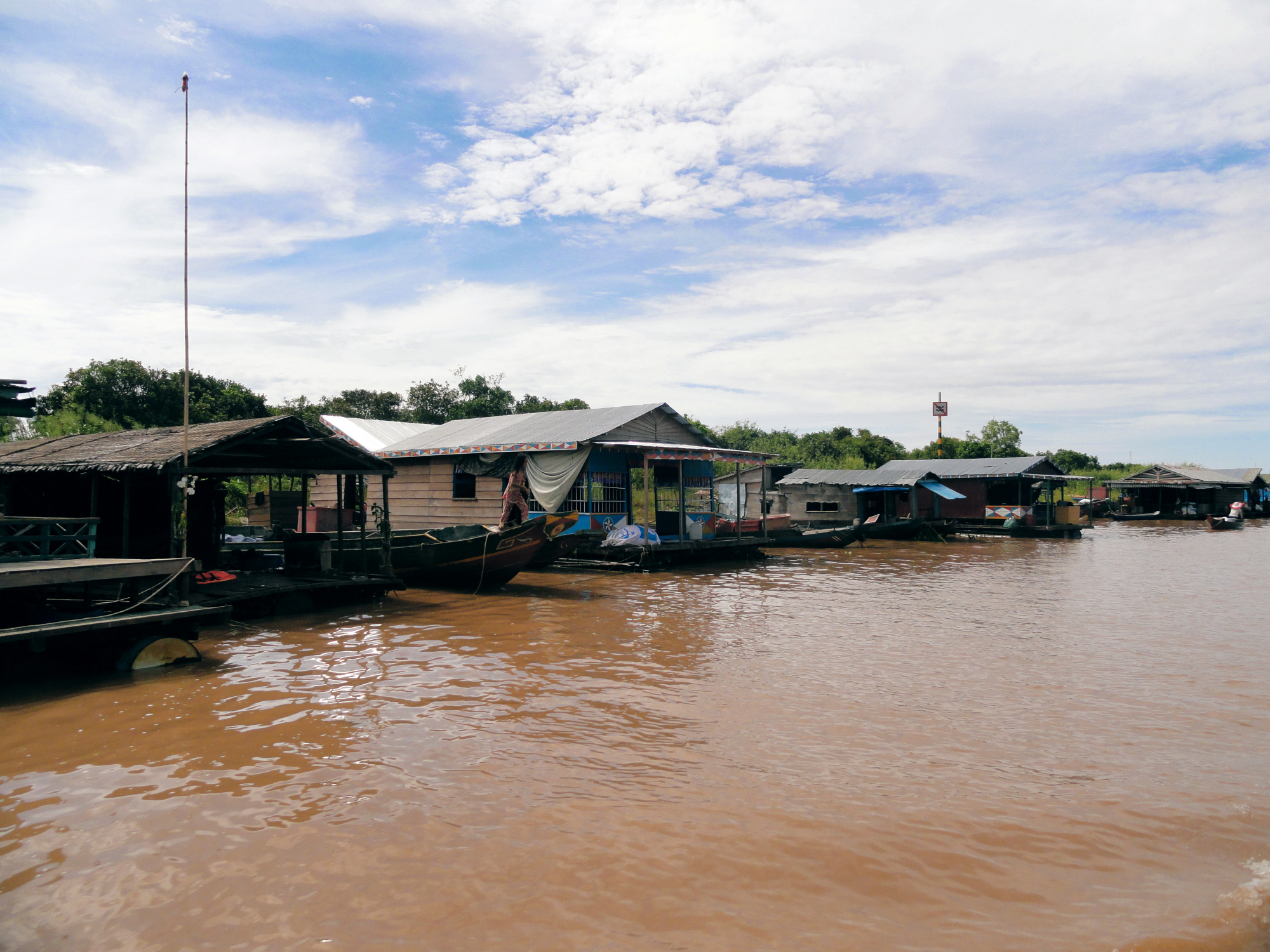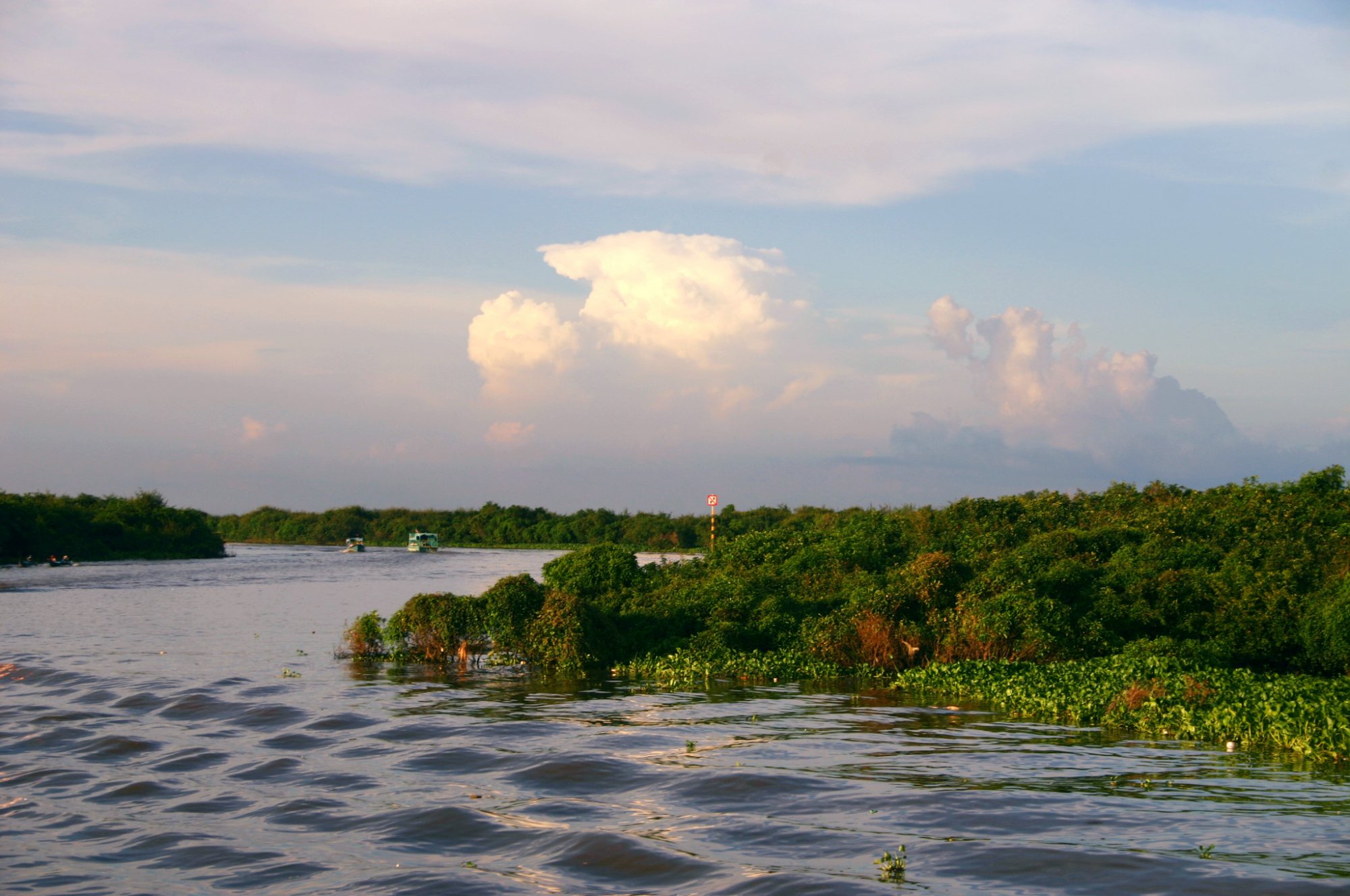Cập nhật: 01-01-1970 12:00:00 | Blogs about Cambodia | Lượt xem: 1044
Gained a reputation for its phenomenal seasonal fluctuations, Tonle Sap Lake is the largest freshwater lake in Southeast Asia and a must-visit for anyone seeking an off-the-beaten-path experience in Cambodia. This massive body of water is not only a UNESCO biosphere reserve but also a vital resource for millions of Cambodians who make a living by fishing here. If you’re thrilled to learn more about lives in floating villages and the stunning birdlife of this region, Tonle Sap Lake is right up your street.

Tonle Sap (or “Fresh River”) is a giant lake located in the Lower Mekong Basin, northwest of Cambodia. It covers an area of only 2500 km2 during the dry season, but expands more than six-fold to over 16000 km2 during the wet season due to changes in the water levels of the Mekong River. Often referred to as the Great Lake, this is the largest freshwater lake in Southeast Asia and also one of the world’s most diverse and productive ecosystems. Tonle Sap Lake and its surrounding floodplains were designated a UNESCO Biosphere Reserve in 1997.
Dotted around Tonle Sap Lake are a few floating villages where houses, schools, clinics, and markets are mainly built on boats or stilts. These communities rely on the lake for fishing, transportation, and trade, offering an intriguing glimpse into a way of life that has remained largely unchanged for generations. The villagers residing here are mostly Khmer, Cham, and Vietnamese.

Like most other Cambodia places of interest, the climate in this area is characterized by two main seasons and year-round warm temperatures. For those seeking to witness the full grandeur of the lake, the rainy season (May – October) is ideal. This is when Tonle Sap Lake swells to its maximum size, forming a gorgeous vista of flooded forests and extensive wetlands. However, the frequent downpours may affect your experience.
If you prefer nicer weather for your Cambodia holiday on Tonle Sap Lake, the dry season (November – February) will be a better choice. Despite being smaller in size, the lake still features clear skies and dry air during this time, which are perfect for boat tours and outdoor activities.
Tonle Sap Lake can be easily accessed from Siem Reap Cambodia by car or tuk-tuk. A typical tuk-tuk ride from the center of Siem Reap to one of the main floating villages on the lake takes around 45 minutes and costs around $5 – $10 each way, while for car/taxi transfer this price could be doubled.
For a more immersive experience, you can also take a boat ride from Siem Reap’s boat pier, which will allow you to navigate through the shallow waters and observe the daily lives of local communities. This scenic trip often lasts 2 – 3 hours depending on stops and water levels, with prices ranging from $15 – $25 per person for shared boats and $30 – $50 per boat.
>>> Siem Reap Tour 4 days with Tonle Sap Lake
As one of the most well-known Siem Reap attractions, the floating villages on Tonle Sap Lake are absolutely great destinations for both culture and nature enthusiasts, especially those who wish to gain a deeper insight into traditional Cambodian life. Guests coming here can either book a local tour, or plan their trip independently. By touring these villages, you will have the chance to observe local lives up close as well as learn about some traditional fishing techniques. The most popular villages open to visitors on Tonle Sap Lake are Chong Kneas, Kampong Phluk, Mechrey, and Kampong Khleang.
Due to its favorable location, Chong Kneas is the easiest to reach from Siem Reap but also the most touristy. Compared to Chong Kneas, the other villages are less frequented by tourists and will definitely offer a more authentic experience. Kampong Phluk is famous for its towering stilts and the flooded mangrove forest nearby, while Mechrey provides a better opportunity to watch traditional fishing practices and admire the countryside’s tranquil beauty. Lastly, Kampong Khleang is the most remote among those four and also the largest floating village on Tonle Sap.

Another feature that makes Tonle Sap Lake a striking spot for your Vietnam and Cambodia tour is its spectacular wildlife, highlighted by a seasonal population of waterbirds. If you are a keen birder, you will surely love the Prek Toal Bird Sanctuary at the western edge of the lake. This sanctuary is home to one of the largest concentrations of waterbirds in Southeast Asia with about 150 species, including endangered species such as the giant ibis, the white-shouldered ibis, and the lesser adjutant stork.
Although the rainy season is the best time for visiting Tonle Sap Lake in general, the dry season is the prime time for birdwatching and would make a better choice if you’re here for those lovely creatures. Boat rides through the sanctuary’s flooded forests usually last 2 hours and provide an intimate experience with the rich birdlife and lush landscapes. For a deeper understanding of the sanctuary, consider booking a guided tour via a reliable agent.
Most visitors often choose to stay in Siem Reap and only explore Tonle Sap Lake via a short day trip, but you can stay in one of the floating homestays or join a specially designed tour for a deeper cultural immersion. Such tours often include visits to the iconic floating villages and mangrove forests, traditional Cambodian meals with host families, fishing trips with local fishermen, and opportunities to enjoy outstanding performances such as Apsara dance or Khmer folk music.
There are several types of cultural tours you can opt for, ranging from half-day village tours to full-day excursions and even overnight stays. They provide not only a fantastic chance to participate in hands-on cultural activities like practicing fishing techniques or preparing delectable dishes but also an excellent method to interact with locals and support sustainable tourism initiatives.
Apart from boat tours and cruises, adventurous travelers can also discover certain areas of Tonle Sap Lake by kayak, canoe, or stand-up paddleboard. These are fun ways to gain a closer look at the local flora and fauna, recharge for a while, and get closer to nature. They may be less common, but still available through specialized eco-tour operators in Siem Reap. In addition, some floating lodges or homestays offer safe swimming areas that allow you to cool off in designated parts of the lake.
However, the waters of Tonle Sap can be unpredictable, so it’s important to check your equipment’s safety standards before taking part in any kind of water sports here. Last but not least, don’t forget to carefully listen to your guide’s safety instructions and wear your life jacket at all times on the water.

Essentials Tours - 4 days 3 nights

Culture - History - 10 days 9 nights

Essentials Tours - 12 days 11 nights













